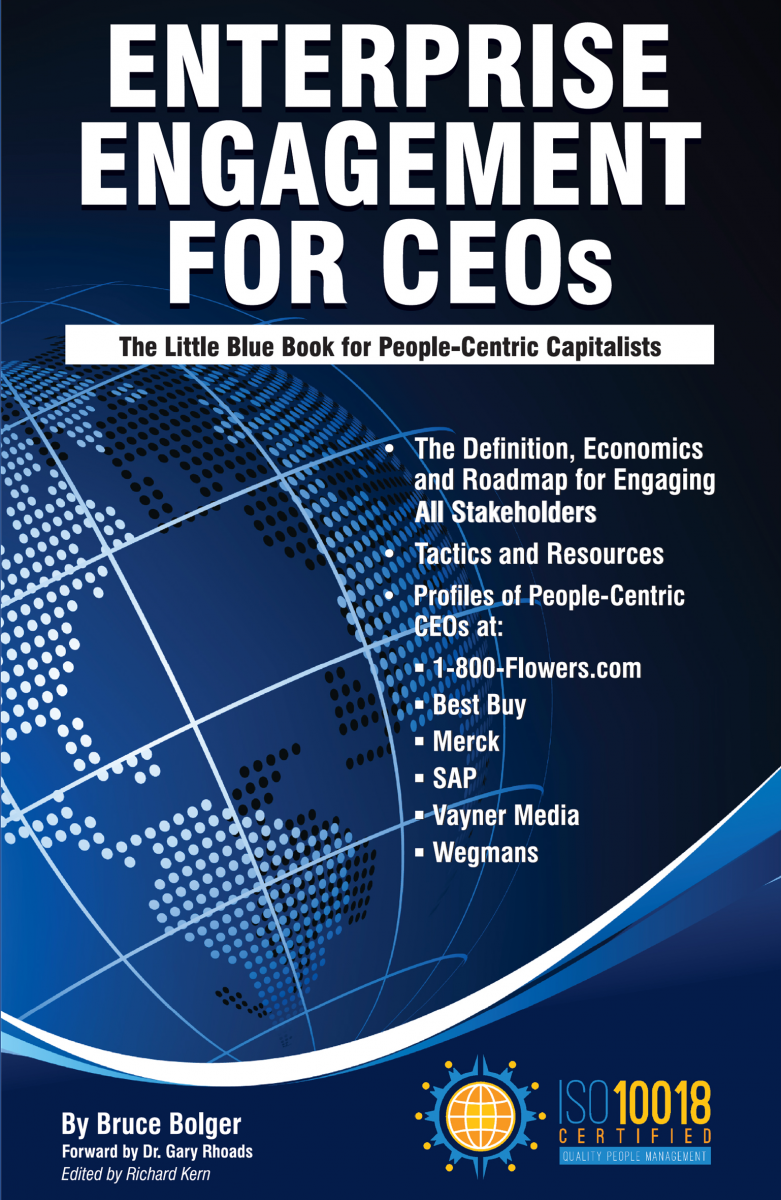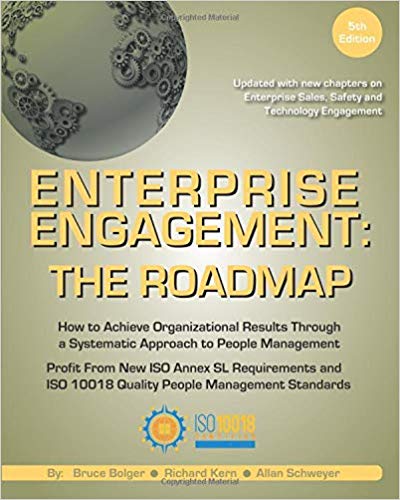Human capital disclosure proponents were largely disappointed by the Securities & Exchange Commission’s historic move that for the first time requires US public companies to disclose human capital practices in their annual reports. The problem for critics? The SEC leaves it up to companies to decide which disclosures are material to understanding their business. Nonetheless, the recognition by the SEC that human capital is material to organizational success is an enormous step forward and will heighten awareness of the issue with boards and CEOs, who from a fiduciary standpoint are required to address any issue deemed “material.”
By Bruce Bolger
In a bid to modernize and deregulate public company disclosure rules related to S-K regulations, the SEC for the first time added a requirement for the
disclosure of human capital practices. While historic in its recognition of the materiality of human capital, the disclosure requirements fall well short of the desires of the nearly 80 organizations that responded to the SEC proposal last year, including the
Enterprise Engagement Alliance, publisher of ESM. Most advocated for detailed, comparable disclosures.
Only a few companies registered opposition, including Chevron, Fed Ex, and General Motors, on the general basis that human capital cannot be effectively measured or compared. The updated regulations, which also include environmental and other disclosure changes that some view as a small step forward in the environmental domain as well, was passed by a 3-2 vote and was opposed generally on the basis that the new disclosure requirements are too vague.
The new human capital disclosure regulation requires public companies to provide “a description of the registrant’s human capital resources to the extent such disclosures would be material to an understanding of the registrant’s business.” The rule requires “a description of the registrant’s human capital resources, including the number of persons employed by the registrant, and any human capital measures or objectives that the registrant focuses on in managing the business (such as, depending on the nature of the registrant’s business and workforce, measures or objectives that address the development, attraction and retention of personnel).”
In a statement, SEC Chair Jay Clayton says, “I am particularly supportive of the increased focus on human capital disclosures, which, for various industries and companies, can be an important driver of long-term value…Today’s rules require that, in crafting their human capital disclosure, companies incorporate the key human capital metrics, if any, that they focus on in managing the business, again to the extent material to an understanding of the company’s business as a whole. Experience demonstrates that these metrics, including their construction and their use, (vary) widely from industry to industry and issuer to issuer, depending on a wide array of company-specific factors and strategic judgements.”
Disappointment Among Human Capital Proponents
In opposing the language of the new rules, SEC Commissioner Allisan Heren Lee says in a statement: “On diversity then, should we assume that management at the hundreds (if not thousands) of companies that don’t provide data on workforce diversity have carefully and accurately determined that the information is not material to their business?” Commissioner Caroline Crenshaw agrees that the rule “fails to deal adequately with significant modern issues affecting financial performance: climate change risk and human capital.”
In a prepared statement,
The Human Capital Management Coalition, a coalition of pension funds that advocates for greater disclosure on human capital, writes “that under the new rules shareholders would still face difficulty in obtaining information that is clear, consistent, and comparable in order to make optimal investment and voting decisions. While the rulemaking represents important progress in acknowledging the importance of the workforce, the new rules give public companies too much latitude to determine the content and specificity of the human capital-related information they report.”
Amy Armitage, Co-chair,
Human Capital Investment and Reporting Council, concurs. “Many of our members with knowledge of global ISO human capital reporting standards would say the SEC action falls far short—as it fails to provide needed clarity on how organizations define ‘what matters’—i.e., the materiality of human capital management to business value. The SEC ruling fails to require even the simplest of disclosures around strategic metrics related to workforce diversity, total cost of workforce, safety, workforce risk, workforce investment and value-creating return.”
New Rule Will Heighten Attention on Human Capital
Tom Riesenberg, Director of Legal and Regulatory Policy of the
Sustainability Accounting Standards Board,
writes, “While the SEC did not take the approach SASB recommended, there is an upside of this statement: the SEC is recognizing that disclosure frameworks can facilitate disclosure pursuant to the new human capital requirement. The SEC said nothing that would discourage use of a set of standards such as SASB. Instead, the rule release said that companies have the flexibility to use standards in order to facilitate an understanding of their business. We think this should encourage companies to explore how standards can be useful in this area — rather than making disclosures on a blank slate, companies can turn to a broadly-accepted, widely-used set of standards, a move that could provide companies with some insulation from investor criticism and (arguably) liability exposure and could also help companies reduce the burden of surveys and one-off ESG information requests."
Larry Beeferman, Fellow, Labor and Worklife Program at the Harvard Law School, tells ESM, “The SEC did just about the bare minimum on workplace-related issues. For the near term, activists will presumably leverage it for change, while there will likely be more aggressive action on `voluntary’ disclosure and efforts at the legislative level, including at the state level.”
Armitage also points out that the SEC regulation combined with other trends will put more focus on the subject. “Consideration of these strategic measures is already underway at the board level, accelerated by the pandemic. The glacier of resistance to disclosure is melting rapidly. Boards and investors both are demanding more answers and accountability about human capital management as the driver of economic recovery and value in our global economy. We see a continued opportunity in the SEC ruling for corporate leaders—especially human resources--to step up and provide that needed clarity around strategic metrics aligned to business strategy, disciplined workforce planning, data-based analytics processes, workforce risk management, collaboration on ESG (environment, social and governance) concerns, and other practical ways to create sustainable human capital management.”
From the standpoint of the Enterprise Engagement Alliance, the honorable Jay Clayton appears unaware of multiple objective metrics that can be used to predict an organization’s success, including those provided by SASB,
B-Lab, and included in
ISO 30414 human capital reporting standards. Nonetheless, this disclosure requirement is a major step forward as it recognizes the materiality of human capital to organizational success. This alone is a significant, especially coming from a Republican administration focused on deregulation.
In the context of Covid-19 and the Black Lives Matter movement, it will be impossible for many public companies to get around the new SEC requirement that their disclosures should be “material to an understanding of the registrant’s business.” Under today’s circumstances, or any for that matter, it is hard to believe there are many companies for whom human capital is not material to an understanding of the registrant’s business.
The SEC regulation has the potential to set off a competitive or even cooperative bid by people-centric companies to publish more detailed
Corporate Responsibility Reports and to even agree upon standards related to the information provided, as the Business Roundtable is currently in the process of doing. As more companies such as Merck publish detailed Corporate Responsibility Reports, pressures will grow on other companies to make such disclosures. Those that don’t will have trouble explaining their passion for people to the estimated 70% of consumers and investors who now factor an organization’s commitment to people into their buying, career, and investing decisions, according to surveys conducted by
JUST Capital.
Master the Principles of Stakeholder Capitalism And Implementation Through Enterprise Engagement
Education, Certifications, and Information to Activate
Stakeholder Capitalism Available Nowhere Else
A complete learning, certification, and information program and a course syllabus for educators.
Training and Certification
Enterprise Engagement Alliance Education: Certified Engagement Practitioner; Advanced Engaged Practitioner, and Certified Engagement Solution Provider learning and certification programs on how to implement Stakeholder Capitalism principles at the tactical level.

Join the EEA to begin your certification process or see our other resources below.
THE ONLY BOOKS ON STAKEHOLDER CAPITALISM IMPLEMENTATION

Enterprise Engagement: The Roadmap 5th Edition
The first and most comprehensive book on Enterprise Engagement and the new ISO 9001 and ISO 10018 quality people management standards. Includes 36 chapters detailing how to better integrate and align engagement efforts across the enterprise. (312 pages, $36.)
OTHER RESOURCES TO ACTUALIZE STAKEHOLDER CAPITALISM
Communities: The Enterprise Engagement Alliance and Advocate and the Brand Media Coalition free resource centers offering access to the latest research, news, and case studies; discounts, promotions, referrals, and commissions, when appropriate to third-party solution providers from participating coalition solution provider members.
Enterprise Engagement Resources: EEXAdvisors.com provides the only curated online marketplace to access hundreds of solution providers in all areas of human capital management and enterprise engagement throughout the world.
Online Overview:
10-minute short course: click here for a 10-minute introduction to Enterprise Engagement and ISO standards from the Coggno.com learning platform.
Services:
• The Engagement Agency at EngagementAgency.net, offering: complete support services for employers, solution providers, and technology firms seeking to profit from formal engagement practices for themselves or their clients, including Brand and Capability audits for solution providers to make sure their products and services are up to date.
• C-Suite Advisory Service—Education of boards, investors, and C-suite executives on the economics, framework, and implementation processes of Enterprise Engagement.
• Speakers Bureau—Select the right speaker on any aspect of engagement for your next event.
• Mergers and Acquisitions. The Engagement Agency’s Mergers and Acquisition group is aware of multiple companies seeking to purchase firms in the engagement field. Contact Michael Mazer in confidence if your company is potentially for sale at 303-320-3777.
Enterprise Engagement Benchmark Tools: The Enterprise Engagement Alliance offers three tools to help organizations profit from Engagement. Click here to access the tools.
• ROI of Engagement Calculator. Use this tool to determine the potential return-on-investment of an engagement strategy.
• EE Benchmark Indicator. Confidentially benchmark your organization’s Enterprise Engagement practices against organizations and best practices.
• Compare Your Company’s Level of Engagement. Quickly compare your organization’s level of engagement to those of others based on the same criteria as the EEA’s Engaged Company Stock Index.
• Gauge Your Personal Level of Engagement. This survey, donated by Horsepower, enables individuals to gauge their own personal levels of engagement.
For more information, contact Bruce Bolger at Bolger@TheEEA.org, 914-591-7600, ext. 230.
















